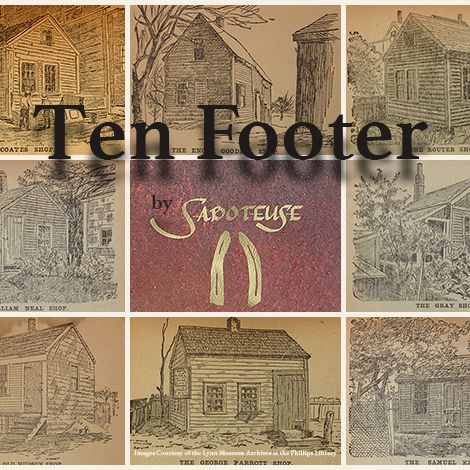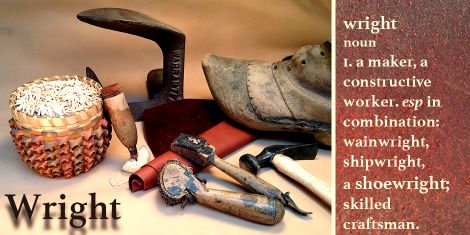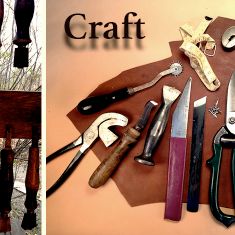Ten Footer




At the birth of industrialization, in a desperate attempt to preserve their way of life, bands of craftsmen in Europe threw their wooden shoes (sabots) into the cogs of the Mill gears, hoping to grind the wheels of change to a halt. Their protest survives still in the word saboteur.
Across the sea, similar independent shoemakers around Lynn MA (soon after to become the Industrial Shoe Capital of the World,) worked in small shops adjacent to their homes called “Ten Footers.” These craftsmen would be the last of their kind in the region to produce a complete shoe by hand, using age-old techniques and simple tools. These workers determined their own pace of life and the conditions of their labor, they fit their craft seamlessly into the rhythm of their families. Ten Footers were ubiquitous. The atmosphere and the work in a Ten Footer defined the shops as community gathering spots, fostering social conversation that bound the neighborhood and promoted discourse.
As large mills materialized they drew craftsmen away from their art into an industrial life of assembly. By 1890, the Ten Footer was obsolete. Industry grew, as did the disparity of wealth and classes. The Individual Shoemaker, and his knowledge, were no more. By 1990, the cycle of large-scale manufacture had eliminated shoemaking entirely in the Greater Boston area.
Shoecraft was by all determining factors a good, true, decent way of life both for the shoewrights and for their communities. In most communities of Greater Boston, suburban Zoning Bylaws prohibit the conditions of a Ten Footer studio. I am building a Ten Footer and working with Wakefield’s Town Planner to refine language to allow for and support these creative pursuits townwide. I endeavor to establish a new generation of the Ten Footer, to reinstitute a vernacular way of life, space and tradition. A Ten Footer will strengthen a neighborhood, Zoning support will pave the path to Open Studios where Ten Footers will strengthen the Town.